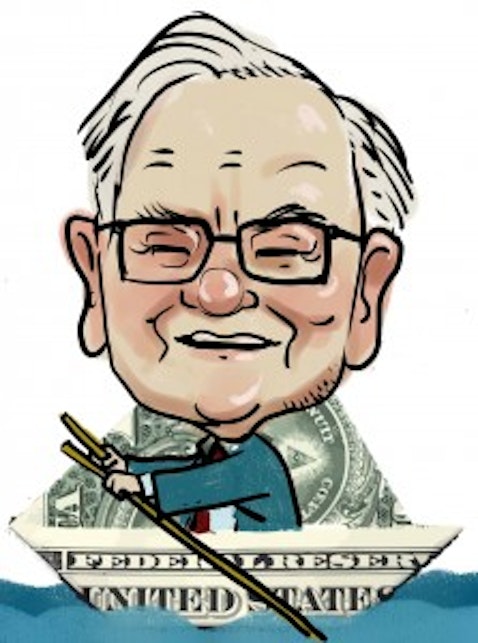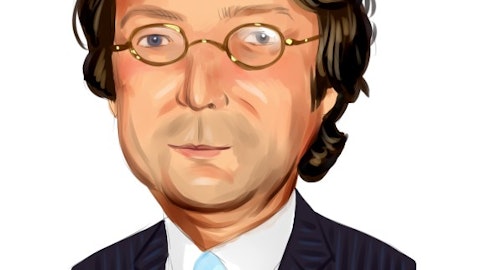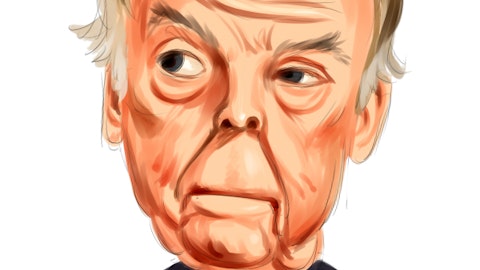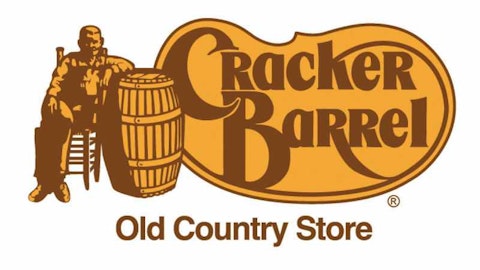
US Bancorp (USB): On April 18, Lee Mitau, EVP, General Counsel, and Secretary at US Bancorp, purchased 8,000 shares of USB for a total of $204,160, or $25.52 a share. The transaction was reported to SEC on April 20 and USB closed at $31.29 per share on that day. Mitau also purchased 1,500 shares of USB at $25.35 per share in late January. USB is quite popular amongst the hedge funds we track. At the end of 2011, there were 38 hedge funds with USB positions in their 13F portfolios. Billionaire Warren Buffett was the most bullish money manager about USB. His Berkshire Hathaway had $1.9 billion invested in this stock at the end of last year. Andreas Halvorsen, Jean-Marie Eveillard, Jeffrey Vinik, and Ken Griffin were also in favor of USB.
USB is exposed to relatively low risk. The company has prudent underwriting practices and a strong balance sheet. USB’s Basel II Tier 1 common equity ratio is 8.4%, well above the minimum of 7%. Its strong capital position indicates that USB has the ability to repurchase shares. The company has already bought back 22 million shares over the past year and another 16 million shares during the first quarter this year, and it looks like the trend will continue. USB has a share repurchase authorization of 100 million shares through March 2013. In addition to the benefits of share repurchasing, USB also pays out dividends regularly. It recently raised its quarterly dividend from $0.125 per share to $0.195 per share. USB’s current dividend yield is about 2.5% and its payout ratio is below 30%. The low payout ratio implies that USB has the capability of further increasing its dividend payments in the future, which is good for investors.
Like most financial stocks right now, USB is also trading at low multiples. The company’s current P/E ratio is around 12, on par with the industry average of 11.58. The company is expected to make $2.74 per share in 2012 and $2.99 per share in 2013, versus $2.55 per share for the trailing 12-month. With regard to valuation, competitor Wells Fargo & Co (WFC) looks more appealing than USB. Wells Fargo is expected to earn $3.27 in 2012 and $3.67 in 2013 – and it is priced lower relative to its earnings. Its P/E ratio for 2013 is 8.9, compared with 10.4 for USB. Both companies’ earnings are expected to grow at around 10% annually. Wells Fargo is also much more popular amongst hedge funds. There were 68 hedge funds with positions in the company at the end of 2011, including Warren Buffett to the tune of $10.6 billion.
The Mosaic Company (MOS): On April 16, Director Emery Koenig purchased 1,000 shares of Mosaic for a total of $50,249, or $50.25 per share. The transaction was disclosed to SEC on April 17. Another Director, Nancy Cooper, also upped her ante in the company buying 100 shares at $50.11 a share on April 16. The stock closed at $51.27 on April 20. However, for as bullish as insiders seem to be, Mosaic does not seem to be popular amongst hedge funds. Steven Cohen’s SAC Capital Advisors had $33 million invested in the call options of Mosaic, but the fund also had $2.5 million invested in the put options. Similarly, Ken Griffin’s Citadel Investment Group had $25 million invested in Mosaic puts and $21 million invested in Mosaic calls.
Though hedge funds are not very interested in Mosaic, we recommend the stock as a buy. Mosaic has very attractive valuation levels. Its current P/E ratio is 10.98, compared to the industry average of 18.35. The main competitor of Mosaic is Potash Corp of Saskatchewan Inc (POT), whose current P/E ratio is 12.5. Analysts expect Mosaic to make $4.36, $5.31, and $5.86 per share respectively in 2012, 2013, and 2014. Its estimated earnings growth is also encouraging. Analysts expect Mosaic’s earnings to increase by about 18% per year over the next few years, versus 15% for Potash Corp.
We are especially bullish about the potash segment of Mosaic. Mosaic recently settled a large potash contract in China, which will help to keep the company’s potash volume strong. We also see an increased demand for potash over the long term. Plus, the demand for the crop is growing, which will lead to higher potash application rates. We think Mosaic is prepared to benefit from the demand growth as the company has launched a brownfield expansion program in 2006. The company plans to add more than three million tonnes between 2011 and 2020.





